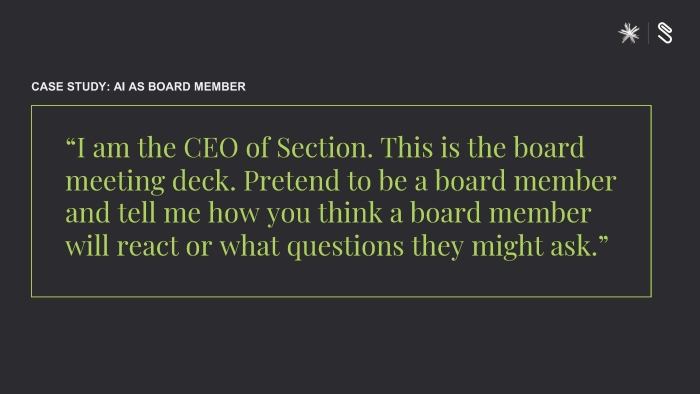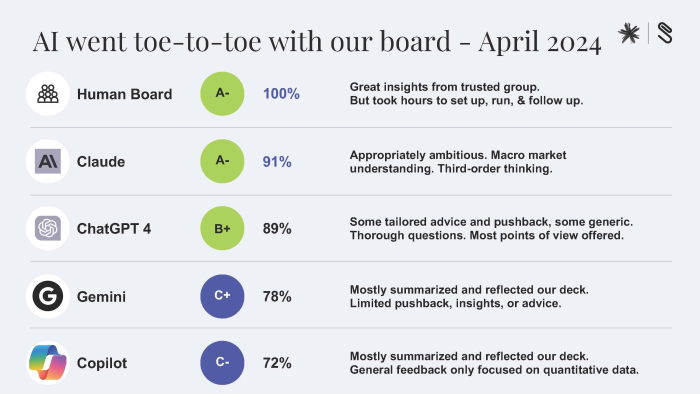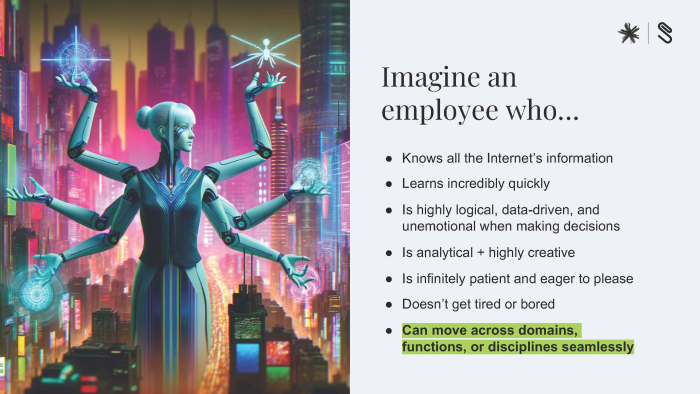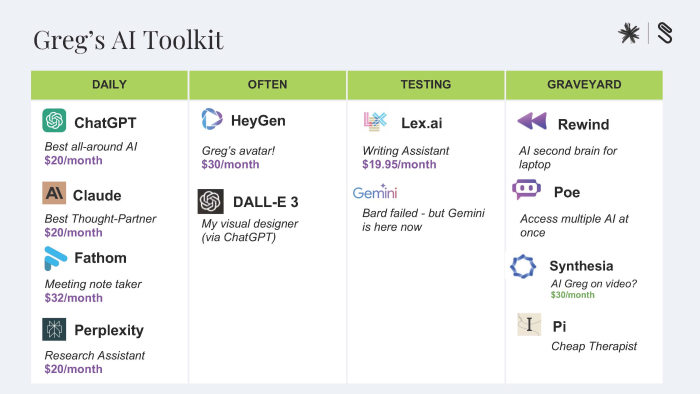I’ve been selected to take part in the artificial intelligence for business mini-MBA programme run by Spark and the US edtech startup Section. Spark has funded 150 places on the $5,000 course to help participants chart an AI-supported vision for their own business.
With Spark’s agreement, I’ll be reporting back on BusinessDesk about what I learn each week. This is editorial content – Spark is not paying for it – though they have funded my course placement and are paying for advertising to promote these articles.
The weeks ahead
First up, below, I talk to Section chief executive Greg Shove about what artificial intelligence (AI) means for business and how he uses it to second-guess his board.
Then, on the course itself, each Friday, I’ll cover:
- Week 1: AI use cases and its three personas – creator, assistant and strategist. Plus how to write custom instructions and other clever things
- Week 2: Using AI as a thought partner. How AI can elevate research and play devil’s advocate on your strategy.
- Week 3: Outline of goals and workflows to increase efficiency, cut costs and improve quality across everything.
- Week 4: Putting it all into practice, where I will learn to design “a habit loop with a cue, craving and response”.
Section was founded in 2019 by NYU Stern professor, entrepreneur, and best-selling author Scott Galloway to disrupt expensive business school education.
It is now run by serial entrepreneur Shove, who says, “AI is like testosterone for my brain”. The Section CEO is 62 years old and wants to grow the firm for up to 10 years while creating US$10 million (NZ$16.5m) in inheritance for his children and grandchildren.
He says as we age, our brains become less plastic and AI can supercharge his fading grey matter. But until recently, the main emotion connected with AI has been anxiety.
'Blind spots'
Now, it is time to get excited.
He says tools such as ChatGPT or Microsoft Co-Pilot can be thought partners.
“I think as leaders, we all have blind spots. AI has fewer blind spots than us. It can cross domains, cross disciplines, cross countries and time zones.
“If you're using AI as a thought partner, you probably care less about it being factually accurate all the time because you're just using it as a way to bounce ideas off and challenge yourself.”
He suggests asking AI to disagree with you on strategy or to consider an idea from a different angle. You can also prompt it to reply in different personas.
For example, you might say to an AI: “As the CFO of a listed company, critique this roadmap for product development”.
Once you have that answer, ask again as a head of engineering, a marketing director or a consumer.
Importantly, AI can do all of this right now for about US$20 a month for most services.
Workers could feed a presentation or strategy document into an AI tool and ask for feedback to determine how their boss, board or clients might react and what questions they are likely to ask.
In this way, Shove has promised his board a 25% productivity increase from the firm's 30 employees by the end of the year. He says that won’t mean fewer staff, or four-day work weeks.
It just means employees can do more.

Board members need to be proficient in AI and actively use tools such as Co-Pilot, or Claude, which he sees as the top AI tool for business analysis.
"I'm using AI to pretend to be the board and get me ready for board meetings. The board should be using AI when they're getting a plan or a deck or an update, or an investment memo.
"If I was a board member or on some sort of committee, I would use AI before going into that meeting to get myself much better prepared much faster.”
He says this allows board members to elevate the debate by asking better questions.
He has been doing this with his own board, comparing their performance to various tools.

Could he see a time when you would only have an AI boss or board? “I don’t. Real experience matters. Real intuition matters. Not all decisions are obvious. Not all decisions can be derived from data and analysis.
“You need a combination of experience and intuition, and you get that from humans. In general, we'll still need boards, we'll still need investors, and we'll still need teams.”
Shove believes the first industries to be majorly impacted by AI will be media, entertainment and software development, such as gaming.
AI will be a big boost to productivity.
“I think this is a great moment for New Zealand.
“Getting to use AI is relatively fast and easy. It's just a mindset. It's not a skill; these are not hard skills to develop this."

Shove sees an opportunity for medium-sized businesses but thinks these firms may see risk and believe they lack the technical know-how.
He says AI early adopters need to find quick wins, with marketing outputs such as websites, brochures and social media posts as obvious candidates.
Secondly, he says if you are a business that gets customer feedback from NPS scores, surveys or other data points, use AI to summarise and synthesise these.
He’s also seen and heard of significant productivity from small tech teams once they start using tools such as GitHub Copilot.
Shove also says the thought partnership from an AI tool is invaluable to SMEs for analysing business decisions. At US$20 a month, he expects there will always be a strong ROI.

He says the number one question he gets asked is, “How can I use AI?”
He believes slow-moving incumbent firms and startups will lose the AI race to fast-moving incumbents – companies with the right attitude and the ability to invest in the right internal projects.
He points people to a Harvard Business Review article on the 100 use cases for AI.
Big companies that have money to invest will be the winners of the AI race, he says, as long as they move first. Here’s what he says you need to do:
- Get your CEO and leadership team to actually use AI.
- Appoint a head of generative AI. It should be a business leader, not a technical leader, because AI vendors are provisioning a lot of the technology. This is about choosing the use cases with the highest ROI.
- You don’t need a steering committee – that will just slow people down, though you need some rules.
- AI is most useful when you can load your data into it, so you need to allow that.
- Establish a process or framework to analyse AI use cases that start with auditing your workflows. Pick your biggest teams with your biggest pain points and run a quick workflow audit.
- Then, establish a process to greenlight pilots. Don’t spend a lot on these pilots. After a month or more of testing, you decide whether to roll out to more people.
- As AI is embedded in an organisation, it then needs to be built into product road maps, and that’s where technology leadership becomes more important.
- Less ambition in the short term is a good thing. Technology is changing too quickly to base big business transformations on it. He says the most at-risk industries need to move the quickest to transform. “That means you’ve got to find the quick wins.”















